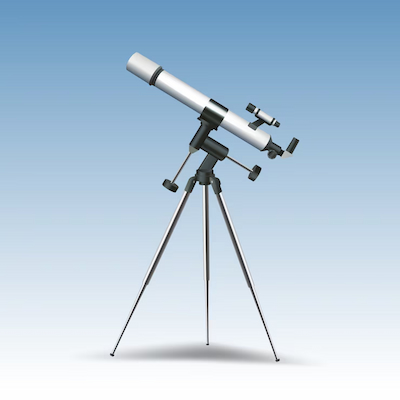
Next-generation radiotechnologies from SETI (Search for Extraterrestrial Intelligence) represent a significant leap forward in the search for intelligent life beyond Earth. With increasing computational power and advancements in observational instruments, scientists are exploring new ways to detect possible communications from extraterrestrial civilizations. This fascinating field combines astronomy, engineering, and astrobiology, creating a multidisciplinary effort to answer one of humanity’s oldest questions: are we alone in the universe?
The search for intelligent signals is an ongoing endeavor that involves the use of radio telescopes, data analysis, and international collaboration. As new technologies emerge, the chances of detecting signals from advanced civilizations increase. Next-generation SETI radiotechnologies are key to expanding our understanding of the cosmos and the potential for life on other planets. In this article, we’ll explore how these technologies work, their advantages, and how they’re used to detect extraterrestrial signals.
How Do Next-Generation SETI Radiotechnologies Work?
Next-generation SETI radiotechnologies combine radio telescopes, advanced algorithms, and data analysis techniques to identify signals that may originate from extraterrestrial civilizations. Radio telescopes capture radio waves emitted by objects in space, including stars, planets, and potentially, artificial transmissions. These telescopes operate at various frequencies, enabling the detection of a broad range of signals.
One of the main innovations in SETI radiotechnologies is large-scale data processing. With the advent of high-performance computing, scientists can analyze massive volumes of data collected by telescopes to identify patterns that could indicate artificial signals. These patterns can be subtle and require complex algorithms to distinguish them from natural radiation sources. Data analysis is therefore a critical part of the process, allowing researchers to filter out noise and focus on meaningful information.
Another important aspect is the continuous monitoring of signal frequencies. Radio telescopes are often set to observe specific regions of the sky for extended periods in order to detect transient signals that might go unnoticed during short-term observations. This long-term surveillance increases the chances of detecting potential signs of intelligent life. In addition, collaboration among observatories worldwide allows for broader coverage and stronger validation of findings.
Finally, SETI radiotechnologies also benefit from advances in astrobiology, which help scientists understand the conditions that might support life elsewhere. This knowledge guides searches toward more promising targets and helps interpret potential signals. The intersection between astrobiology and SETI radiotechnology is a growing field that promises to bring new discoveries about life in the universe.

Advantages of Using Next-Generation SETI Radiotechnologies
One of the main advantages of next-generation SETI radiotechnologies is the ability to process and analyze large volumes of data in real time. With advanced algorithms and artificial intelligence, scientists can quickly identify patterns that may indicate intelligent life. This data efficiency allows researchers to focus on the most promising areas of the sky and increases the likelihood of detecting meaningful signals.
Another key benefit is the enhanced sensitivity of modern radio telescopes. New-generation instruments can detect extremely faint signals, which is crucial for identifying transmissions that may originate light-years away. This sensitivity enables exploration of previously unreachable regions of space, expanding the possibilities of discovering extraterrestrial signals.
Moreover, international collaboration between institutions and observatories strengthens the search for extraterrestrial intelligence. This cooperation allows for the sharing of data, resources, and expertise, resulting in a more comprehensive and effective approach. Information exchange among scientists from different countries enriches the field and fosters innovation and new ideas that may lead to major discoveries.
Lastly, SETI radiotechnologies not only contribute to the search for intelligent life but also enhance our understanding of the universe. The discoveries made through these technologies can have profound implications for astronomy, astrophysics, and astrobiology—helping answer fundamental questions about the origin and evolution of the cosmos and our place within it.
How to Detect Extraterrestrial Signals with Next-Generation SETI Radiotechnologies
Use of Radio Telescopes to Capture Radio Waves
Radio telescopes are fundamental instruments in the search for extraterrestrial signals. They act as massive antennas, capturing radio waves emitted by objects in space. These telescopes are designed to operate at different frequencies, allowing detection of a wide range of signals. The precision and sensitivity of modern telescopes are essential for identifying potential transmissions from advanced civilizations.
Analysis of Astronomical Data for Patterns
After data collection, careful analysis is required to identify patterns that may indicate artificial signals. This is done using complex algorithms that filter out noise and highlight relevant signals. Data analysis is one of SETI’s greatest challenges because intelligent signals can be extremely subtle and easily confused with natural sources of radiation.
Real-Time Monitoring of Signal Frequencies
Continuous signal monitoring is a crucial strategy in the search for extraterrestrial intelligence. Telescopes are often configured to observe specific sky regions over long durations, increasing the chances of capturing transient signals that short observations might miss. This constant vigilance greatly improves the odds of detecting signs of intelligent life.
Interplanetary Communication via Space Radar
Interplanetary communication is a growing research area that uses radiotechnologies to transmit and receive signals between planets. This technology can also be used to search for signals from extraterrestrial civilizations, enabling potential data exchanges across worlds. Exploring interplanetary communication methods also provides insight into how life might communicate under different environmental conditions.
Astrobiological Methods to Understand Life Beyond Earth
Astrobiology plays a vital role in the search for extraterrestrial signals by helping identify the conditions that might support life on other planets. This knowledge guides scientists in selecting observational targets and interpreting detected signals. The integration of astrobiology and SETI radiotechnologies is essential to increase the chances of finding intelligent life.
International Collaboration in the Search for Extraterrestrial Intelligence
Collaboration between various institutions and observatories is vital for the success of SETI radiotechnologies. This cooperation enables shared access to data, resources, and expertise, resulting in a more effective and holistic approach. International exchange enriches the field, fostering innovation and new breakthroughs in the quest to find alien civilizations.
The combination of these strategies and technologies makes the search for extraterrestrial signals more robust and promising. As scientists continue refining their tools and methods, the likelihood of discovering intelligent life increases. Next-generation SETI is an exciting, ever-evolving field that fuels hope for one day making contact with other civilizations.

Enjoyed Learning About Next-Generation SETI Radiotechnologies?
Next-generation SETI radiotechnologies are a clear example of how science and technology can come together to seek answers to fundamental questions about life in the universe. With every advancement, we move closer to the possibility of discovering signals from alien civilizations and understanding our place in the cosmos.
Ongoing research in this fascinating field promises not only to reveal the existence of life beyond Earth but also to expand our knowledge of the universe. In this way, the search for extraterrestrial intelligence becomes a shared journey—uniting scientists and curious minds around the world in the hope of a future filled with astonishing discoveries.
Frequently Asked Questions
What are next-generation SETI radiotechnologies?
Next-generation SETI radiotechnologies are advanced tools designed to search for intelligent life signals in space.
How do these technologies work?
They capture radio waves and analyze signals looking for unusual patterns. If something stands out, it could be a sign of life.
Why does SETI use radio waves?
Radio waves travel great distances and are less affected by cosmic obstacles, making them ideal for space communication.
What are examples of SETI radiotechnologies?
Examples include the FAST radio telescope and SETI@home. These powerful tools help in scanning the sky for signals.
Can SETI technology find extraterrestrial life?
It’s possible, but not guaranteed. Next-generation SETI radiotechnologies greatly improve our chances. The search is ongoing!
How does artificial intelligence improve SETI’s ability to detect alien signals?
Artificial intelligence helps SETI analyze massive datasets quickly and efficiently. Machine learning algorithms can identify unusual patterns or anomalies in radio signals that might be missed by human observers. AI also improves the filtering of background noise, increasing the chances of detecting genuine signals that could indicate extraterrestrial intelligence.

